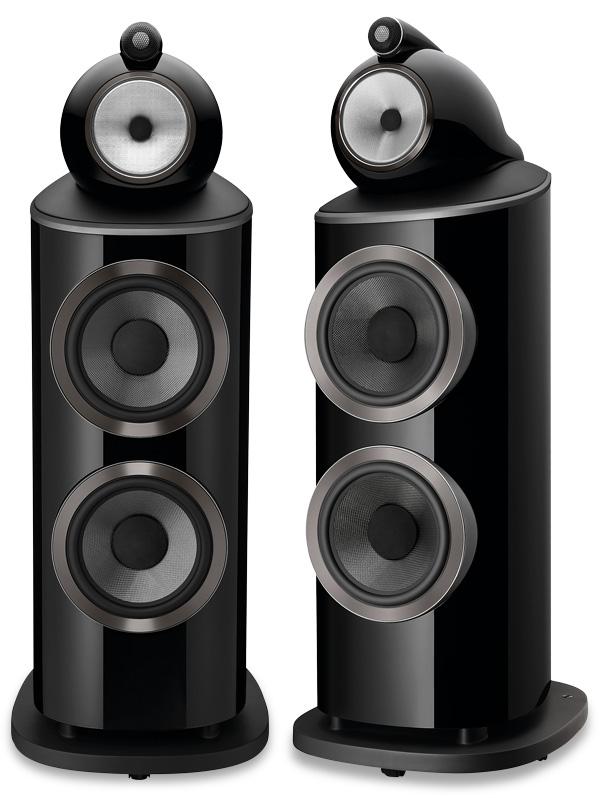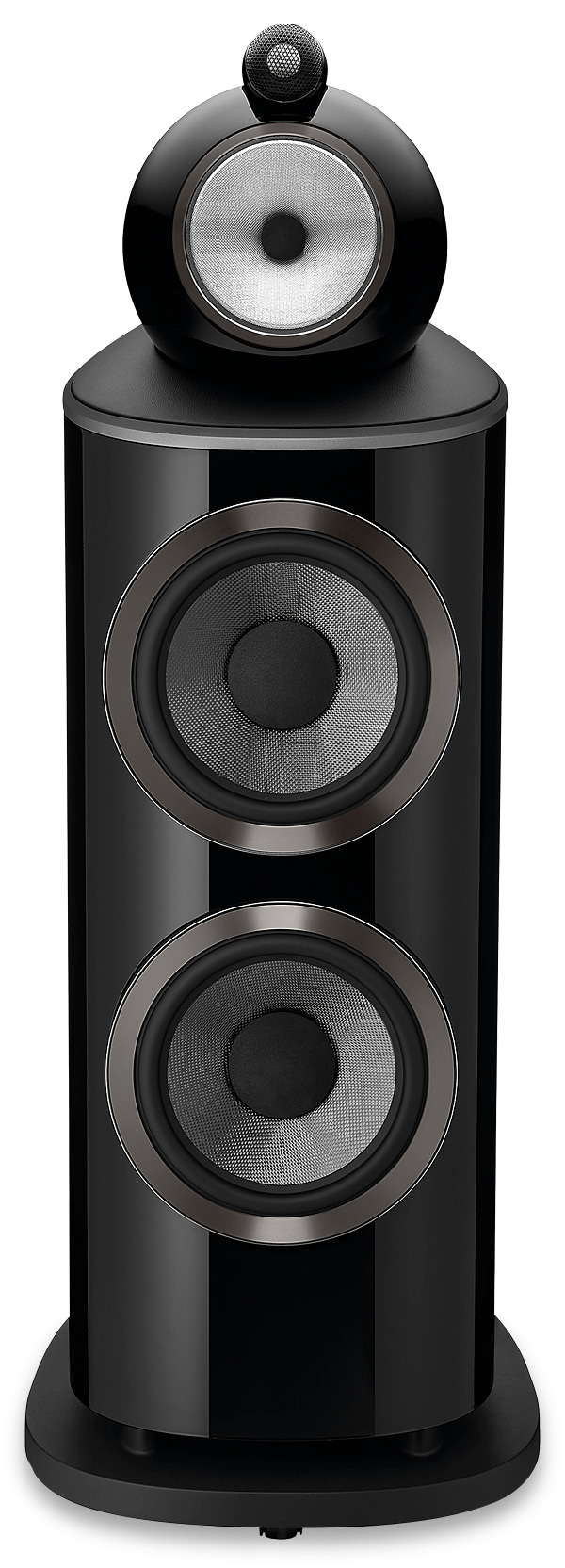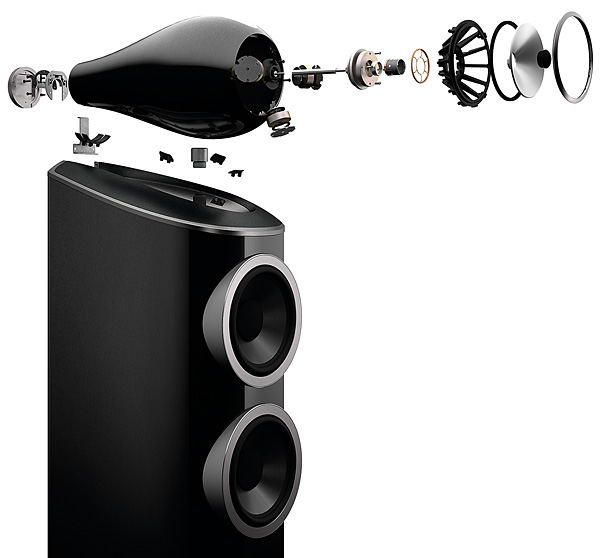B&W 801 D4 Loudspeaker

 A new 800 series, and a return to the original 801 name, but the 801 D4's enhancements are more than skin deep
A new 800 series, and a return to the original 801 name, but the 801 D4's enhancements are more than skin deep
Some six years since the arrival of the Bowers & Wilkins 800 Series Diamond range, and over 40 years after the launch of the company's original 'no compromise' 801 model [Audio Milestones, HFN Jan '13], here we are with an all-new flagship lineup for the Worthing-based company. The timing's about right: in the rolling programme of upgrades, we've seen the 600 and 700 series replaced since the 800 D3 models broke cover [HFN Dec '15], and the company makes no secret of the fact that work started on these new 800s almost as soon as the last generation was released.
Much has changed since that 2015 launch of the 800 D3 range: Bowers & Wilkins was acquired first by Silicon Valley-based Eva Automation, then by Sound United – joining the likes of Denon and Marantz. Meanwhile, the world-famous Steyning Research Establishment has been replaced with a much larger facility at Southwater, also in Sussex.
Diamond Collection
The new 800 lineup – officially called the 'new 800 Series Diamond' – comprises seven models: five main stereo speakers and two matching centre-channel designs. The range kicks off with the 805 D4 standmount at £6250 a pair, and then there are three floorstanders – the £9500 804 D4, the £16,000 803 D4 and the £22,500 802 D4 – plus the two centre speakers: the £4750 HTM82 D4, designed for use with the 803 and 804 models, and the £6500 HTM81 D4, for use with the larger speakers. All models are available in a new Satin Walnut finish, as well as the Gloss Black, White and Satin Rosenut available on the previous series.

And the largest of those speakers is the one we have here – the 801 D4 flagship, at £30,000 a pair, marking a return to the model designation of the original 800 series flagship, the 801 of 1979. The last series had an 800 model, the 800 D3, as its range-topper [HFN Oct '16], launched a year or so after the rest of the lineup arrived. Bowers & Wilkins isn't making quite the same claims for this one that it did when launching the 800 D3, when it made clear that just about every component was new aside from the odd nut and bolt. However, even though the new model might look very similar to the 800 D3 it replaces, much has changed.
Plus ça Change
Now adopted across the board is the company's 'reverse wrap' technology, in which the entire cabinet assembly, front and sides, is made as a single moulding, using thin sheets of wood laminated with glue under heat and huge pressure. This wraps round to create a tapered enclosure, terminated with a metal spine at the rear, onto which the crossover components are mounted for mechanical stability and heatsinking.
But that was already the case for the larger 800 D3 models, and not new in the 801 D4. What is, though, is a reinforced version of the company's honeycomb-like Matrix internal bracing, again used across the range. This now features vertical aluminium sections in addition to the horizontal used in the past, affixed with screws and glue rather than the simple pressure-fit of before. Moreover, the entire Matrix frame is now coupled to the front baffle via a substantial 10mm steel plate.
All that's internal, and thus hidden, but look a bit closer and the changes begin to reveal themselves. The top-plate of the main enclosure, on which the midrange 'Turbine' and treble housings sit, is now aluminium, rather than the wood of the old model, and trimmed in Connolly leather. Black is specified for the Black and Satin Rosenut main cabinets, and a light grey trim for the White and Satin Walnut finishes to match the silver Turbine Head used on those colours. Crucially, this top-plate is now a structural component, further stiffening the construction of the cabinet and the platform for the components above it.

This metal-to-metal fit allows a superior decoupling of the Turbine Head containing the 15cm Continuum Cone FST 'floating' midrange driver, which also gains foam wedges to the rear of its mounting, plus Techsound damping and revised Tuned Mass Dampers within. The driver itself now has a four-point silicone decoupling, and a new 'Double Silver' motor, with silver on the top-plate and pole, further reducing distortion. Perhaps the most radical change is the removal of the concertina-like rear suspension 'spider' in favour of a flexible 'Biomimetic' skeletal frame with thin legs that connect the cone to the basket.
The 25mm Diamond Dome tweeter atop the Turbine Head now sits in a longer milled-from-aluminium 'Solid Body Tweeter-on-Top' tube-loading system, for improved attenuation of rearward energy. There are now two, not three, neodymium magnets in the motor, reducing compression behind the dome, while additional vents in the voice-coil former further enhance this 'free-breathing' design. The decoupling between the treble tube and midrange head is also improved with two L-shaped steel mounts covered in silicone rubber.
The woofers look bigger, but the size is an optical illusion caused by the use of a new foam anti-resonance plug at the centre of each of the 25cm Aerofoil bass units. Behind the cone, the steel in the motor system has been upgraded, for better current handling and lower distortion, while single spiders replace the double units used in the old model. Finally, the bottom of the cabinet has a new aluminium plate to stiffen it around the downward-venting Flowport, and the heftier alloy plinth now has 360° spinning wheels, for easier positioning, and threaded holes that accept long spikes to adjust the forward tilt of the speaker.
![]() Gem Quality
Gem Quality
Yes, the 801 D4 may look very like the 800 D3 it replaces, but it's almost entirely different – and its performance pays tribute to all the changes made by the B&W R&D team. Set up in PM's listening room powered by the mighty 350W Classé Delta pre/power amps [HFN Jun '21], with the Melco N1ZS20 music library [HFN Jun '17], the speakers proved that while they relish a good clean dose of power, when so driven they are capable of astounding results.
























































